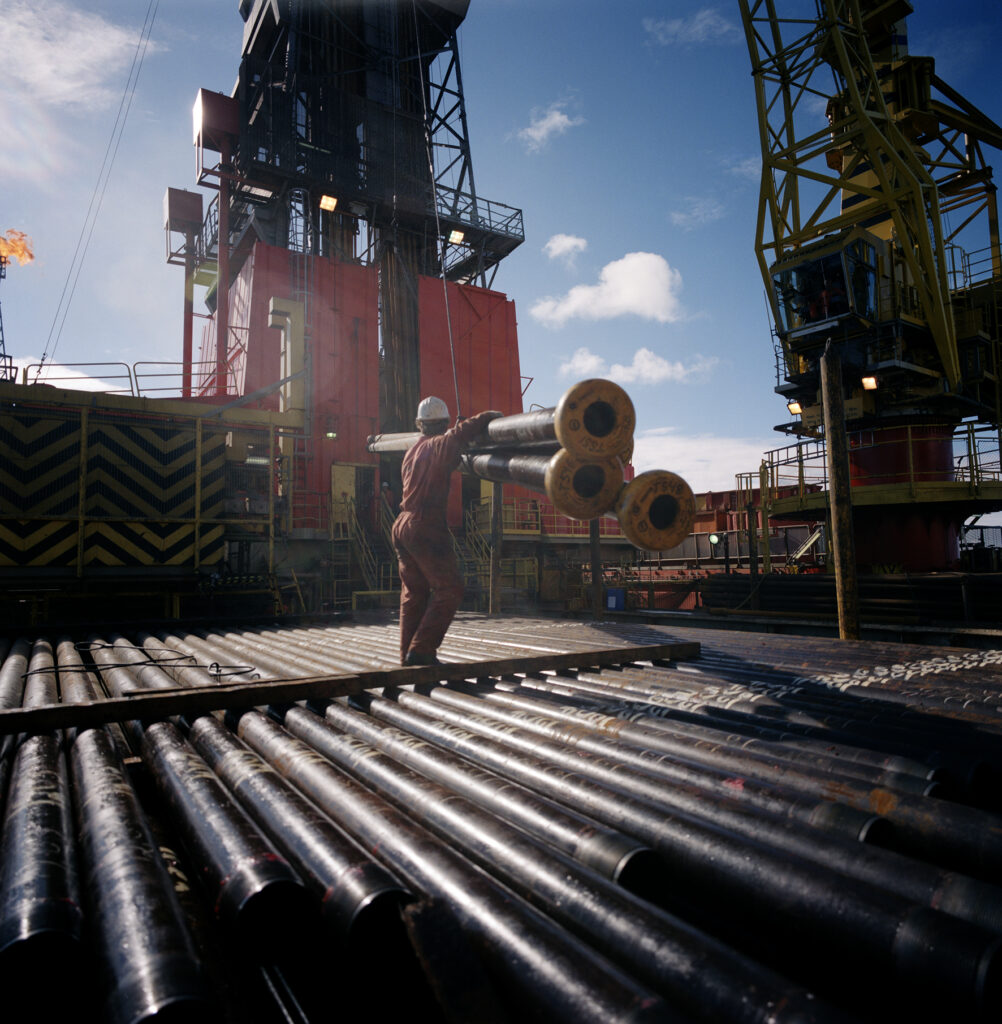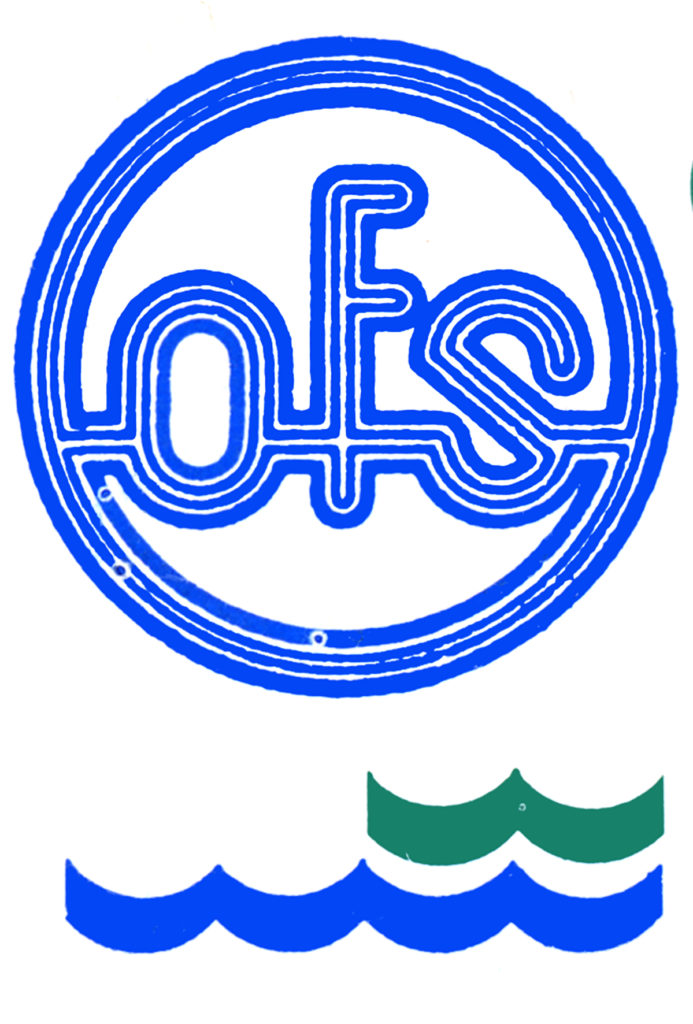The toughest strike

The negotiation opened with the two sides far apart. Represented by the Norwegian Oil Industry Association (OLF), the employers stuck to a policy of moderation which had been agreed centrally between the Norwegian Confederation of Trade Unions (LO) and the Confederation of Norwegian Enterprise (NHO). They feared that a failure to keep within these parameters would have a very contagious effect on other groups of workers. That in turn would be very unfortunate for the competitiveness of Norwegian industry.
The two big unions in the offshore sector were the Norwegian Oil and Petrochemical Workers Union (Nopef), affiliated with the LO, and the independent Federation of Oil Workers’ Trade Unions (OLF). Personnel organised in the latter had no time for the moderation philosophy.[REMOVE]Fotnote: Meland, Trude, 2015, “ABC fra husforening til LO”, Norsk Oljemuseums årbok. https://www.norskolje.museum.no/wp-content/uploads/2016/05/10-ABC-fra-husforening-til-LO-fra-NOM-årbok-2015.pdf. They wanted to make up the ground lost during the wage freeze.[REMOVE]Fotnote: https://ekofisk.industriminne.no/en/ekofisk-committee-merges-with-nopef/
Strike and compulsion

The negotiations were followed by compulsory mediation, in line with Norwegian practice when agreement cannot be reached. Six hours before the deadline for a threatened strike, however, the National Mediator gave up trying to find common ground. At 00.01 on 1 July 1990, 4 000 OFS members on the NCS downed tools in a strike which was legal under Norwegian labour legislation.
OFS president Harald Sjonfjell proclaimed that this could be the longest stoppage ever in the North Sea and that the government would not dare to impose compulsory arbitration. The last time this had been used was in 1986. When the unions then took the case to the administrative tribunal of the International Labour Organisation (ILO), it found the procedure had been wrongly applied. A possible use of compulsory arbitration, which required a vote in the Storting (parliament), would be the sixth time in a decade that the mechanism had been imposed.[REMOVE]Fotnote: Memorandum from Kyrre Nese and Finn de Lange, 9 December 2020.
But acting prime minister Johan J Jacobsen from the Centre Party was not to be cowed. Just 36 hours after the strike began, the non-socialist coalition introduced compulsory arbitration.[REMOVE]Fotnote: NTBtekst, 3 July 1990, “Fortsatt kaos i Nordsjøen – aksjonister blir kraftig advart”.
Illegal stoppage
Although not unexpected, this decision took people by surprise because of its speed. Both that and the timing were regarded as a provocation. Open meetings were called in all haste on the platforms, and the majority voted to stay out.[REMOVE]Fotnote: Trude Meland, “The toughest labour dispute”, Industrial Heritage Statfjord. https://statfjord.industriminne.no/en/2019/12/04/the-toughest-labour-dispute/ Arguing that they had in practice been deprived of the right to strike, the workers were ready for continued conflict.
By the afternoon of 2 July, the stoppage had become illegal under Norwegian labour law. Roughly 1 000 of the strikers refused to return to work. That particularly affected Statoil, as the employer on the three Statfjord and three Gullfaks platforms, and Phillips Petroleum on Ekofisk. Other fields, such as Valhall, were indirectly affected because their output flowed via Ekofisk.
The strike was run locally on the platforms, with the strike leaders onshore excluded. Strike offices were established on each installation, with pickets preventing a resumption of work.
Summoned in all haste, the OFS central committee was legally required to do what it could to halt the stoppage. Sjonfjell now asked the members to appreciate the seriousness of the position and return to work. But he spoke with a forked tongue, telling the press: “I understand their reaction when the government deploys such forcible means as compulsory arbitration against us for the sixth time”.[REMOVE]Fotnote: Aftenposten, 3 July 1990, “Oljestreik tross lønnsnevnd”.


Tensions high offshore
Rolf de Lange, chief safety delegate on Statfjord during the strike, recalls a high level of tension and the strikers maintaining a 24-hour open meeting in the canteen. Since people feared that the company would fly in strikebreakers, the helideck was considered critical. Some wanted to block it with the crane boom, but de Lange managed to stop that. The deck had to be available for evacuation at all times.
A fist fight had broken out on Ekofisk in connection with a helideck landing, and two people had been fired.
Statoil’s Kyrre Nese was on his last tour as offshore installation manager (OIM) before moving to another job. He remembers CEO Harald Norvik taping a “tub-thumping” speech which was dropped on the platform. Nese was told that it should be played over the public address system and this was done – close to countless times. The speech was also relayed into the cabins.
“Norvik spoke firmly and powerfully, and more than suggested that the stoppage could have consequences for everyone involved,” he recounts.
Statoil’s management had no plans to yield to the strikers. It formed part of a common front though the OLF. Such unanimity had not been the OFS’s experience in earlier stoppages.
The next move by the operator was to block communication to and from the platforms. That had several motives, including preventing dialogue with the media and thereby weakening the will to fight.
According to de Lange, that broke the strike. “The open meeting no longer knew what was happening elsewhere. Nor could families be contacted. That created uncertainty and stress.” Although some people were angry and wanted to continue the fight, others had started to get worried about their own positions. With families to feed and loans to service, losing their jobs was not an indifferent matter.
Dismissals on Statfjord
Late on the afternoon of 6 July, Statoil’s management made it clear to the OIMs on all its platforms that each of them was expected to make an example of somebody the following day. Maintenance managers on Statfjord A drew up a work order for the loading system which was to be carried out by two named people.
De Lange relates: “The maintenance manager on Statfjord A presented the work order, and had to confront a furious open meeting. He gave the order to the two who had been assigned to the job, and the meeting became even angrier because these were two of the most sensitive and unassuming souls you could find. The paper copy of the order was simply torn out of their hands and torn to bits by some other, more robust strikers.” This action confirmed the open meeting’s decision to refuse doing work. A representative of the human resources department then came out to the field and the two young Statoil workers were handed their dismissal notices. Twenty Smedvig employees were fired. However, nobody was dismissed on Statfjord C. On 5 July, the strikers on Ekofisk capitulated and were followed by the Statoil workers two days later.
Exhausted

When it was all over, people on both sides were exhausted. Many feelings had been aroused, particularly in relation to those who had been dismissed. One of those who had been active in the open meeting on Statfjord A quit of his own volition. He was unable to live with the fact that two youngsters were the only ones to be fired.
Company medical officer Jens Smith-Sivertsen made a visit to the platform, where many of the workers had gone sick. They were unable to function and had to be given an opportunity to “find themselves”. Tough men broke down in tears. A number suffered health problems and one got heart trouble. According to local daily Stavanger Aftenblad, Statoil was widely accused of using very dirty methods in combatting the strikers.[REMOVE]Fotnote: Stavanger Aftenblad, 2-9 July 1990.
The conflict left deep wounds. Statoil was unyielding even after Phillips had re-hired the two workers it had fired, but eventually expressed willingness to take those dismissed back on specific conditions. The OFS had to accept full responsibility for the illegal strike and also take disciplinary action against a branch chair and deputy chair.
Afterword
Statoil reinstated the workers it had dismissed after just under a year, following tough processes. The company took the view that what had been put in motion had to have consequences for those “behind it”.
The government had made it clear to the oil companies that illegal strikes were unacceptable. Powerful forces were at play. This event had long-last effects in Statoil’s organisation – and in the OLF.
No major illegal strikes have occurred on the NCS since 1990.
arrow_backTroll on landLearning the ropes from BParrow_forward